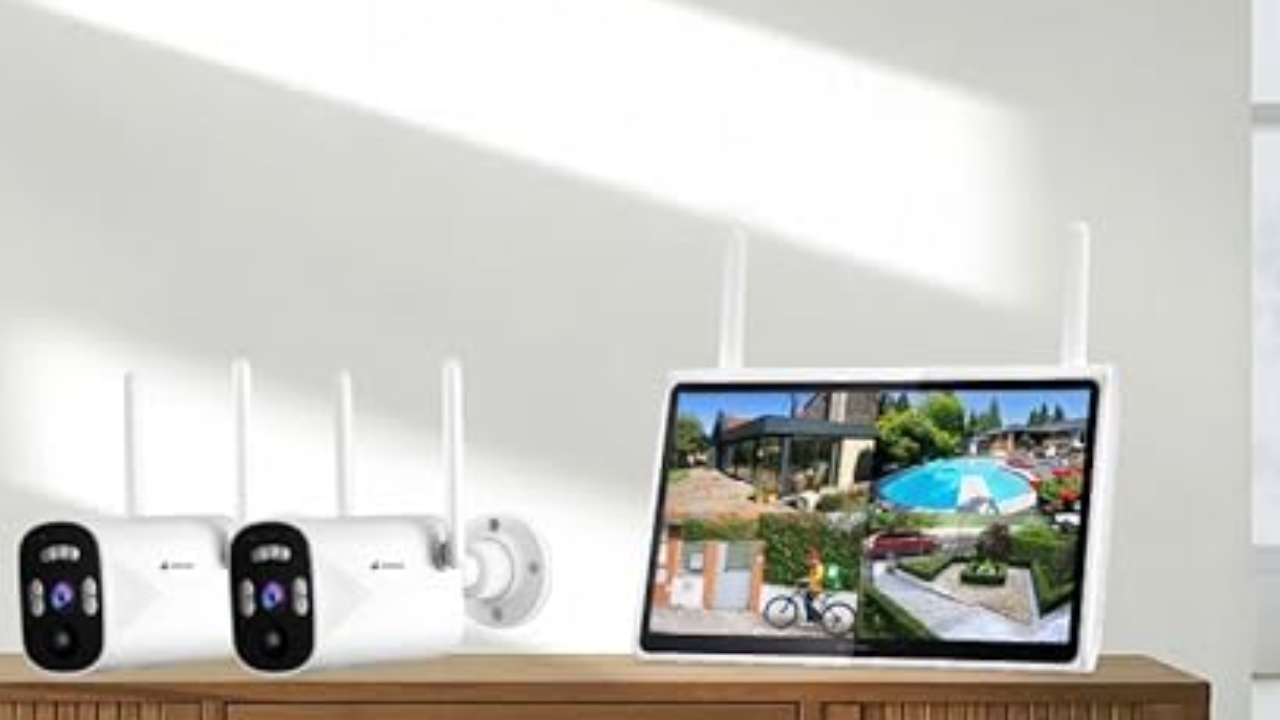Security cameras that run on solar power are a great option for hassle-free setup and continued use without the need for regular battery changes or charging. These cameras' method of operation involves directly absorbing solar radiation to provide continuous monitoring and a longer battery life. With just a few hours of sunlight daily, they can operate endlessly with an appropriate solar panel.
They are therefore the perfect option for outside monitoring, where it may be difficult to get a power outlet. Furthermore, solar energy utilization aligns with environmentally favorable and sustainable methods. This camera with solar battery includes wireless networking, motion detection, and high-resolution video capture thanks to technological improvements, making them a dependable and practical security option for homes and businesses.
How Durable Are Solar-powered Camera Models?
Solar-powered camera types are made to be strong and weatherproof, able to survive a range of environmental factors like rain, snow, and extremely high or low temperatures. To keep moisture and dust out of internal components, they frequently have sealed enclosures and sturdy construction. Furthermore, cutting-edge coatings and materials are employed to improve resistance to corrosion and UV rays, guaranteeing dependable performance even in challenging outdoor conditions over lengthy periods.
Tricks for Using a Solar or Battery to Power a Security Camera
The following are crucial pointers for using solar and battery systems to power security cameras:
Choosing the Correct Equipment
To begin, choose premium, outdoor-specific security cameras that are waterproof. Seek for versions with capabilities like motion detection, night vision, and remote access that are compatible with both solar and battery systems. To survive different weather situations, you need also to invest in sturdy solar panels, effective charge controllers, dependable batteries, and appropriate mounting gear.
Assessing Power Requirements
Determine the power needs of your security cameras before assembling your solar and battery systems. Take into account variables like the number of cameras, how much power they use, the recording parameters, and any other equipment like wireless transmitters or infrared illuminators. The results of this evaluation will assist in estimating the quantity and size of solar panels and batteries required to meet your energy requirements.
Optimal Solar Panel Positioning
To maximize energy production, solar panels must be positioned correctly. Ideally, the panels should face north in the Southern Hemisphere and south in the Northern Hemisphere to receive the most solar exposure possible during the day. Steer clear of any shade provided by structures, trees, or other barriers that can lower solar efficiency. Furthermore, take into account adjustable mounts to maximize panel tilt for various seasons and angles of sunlight.
Choosing the Correct Battery Type
For dependable power backup and storage, the right battery type must be chosen. Although lead-acid batteries are widely utilized because they are less expensive, more recent technologies, such as lithium-ion batteries, provide greater energy density, a longer lifespan, and superior performance in a range of weather situations. The best battery solution for your setup will depend on your needs, your budget, and your available space.
Following Regulations
Learn about local laws, zoning policies, and permission needs for surveillance cameras and renewable energy installations before building a solar and battery-powered security camera system. To prevent future legal problems or fines, make sure that all applicable laws about electrical safety, privacy, and property rights are followed.
Monitoring and Maintenance
The longevity and functionality of your security camera system that runs on batteries and solar power depend on routine monitoring and maintenance. Monitor battery life, solar panel performance, and overall system health with integrated diagnostics or monitoring tools. Periodically clean solar panels to get rid of any dirt, snow, or debris that could block the sun's light. To avoid system failures, make sure to check connections, wiring, and componentry for wear and damage. Then, take quick action to fix any problems you find.
Final Thoughts
By using those suggestions, you can properly power your security cameras using solar and battery structures, offering dependable, long-lasting security options for remote locations, off-grid websites, or locations without access to conventional power sources. By using solar energy to power your home, you may have peace of mind knowing that it is protected around the clock. All it takes is the right system, preparation, and upkeep.


